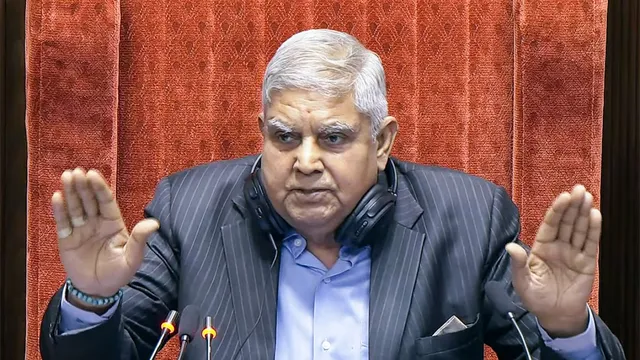- By Priyanka Koul
- Tue, 10 Dec 2024 06:17 PM (IST)
- Source:JND
A no-confidence motion has been submitted against the Vice President. On Tuesday, opposition parties led by Congress moved a no-confidence motion against Vice President and Rajya Sabha Chairman Jagdeep Dhankhar, marking the first such action in the history of the Indian Parliament under Article 67(b). The INDIA bloc has accused VP Dhankhar of "partisan functioning," alleging that he has displayed biased behavior in favor of the ruling party during Rajya Sabha proceedings while ignoring the opposition's demands.
INDIA Bloc formally submits a no-confidence motion against the Chairman of the Rajya Sabha, tweets Congress MP Jairam Ramesh pic.twitter.com/ZHglcPGD8b
— ANI (@ANI) December 10, 2024
The motion has reportedly garnered approximately 70 signatures from MPs representing various parties within the bloc, as reported by India Today. Both Houses of Parliament—the Rajya Sabha and Lok Sabha—have witnessed regular disruptions since the beginning of the winter session. Earlier on Monday, the Rajya Sabha was adjourned amid uproar over allegations by the BJP that top Congress leaders were colluding with billionaire investor George Soros to destabilize the country.
Also Read: INDIA Bloc May Move No-Confidence Motion Against Rajya Sabha Chairman Jagdeep Dhankhar
Despite the motion’s submission, the no-confidence motion is expected to be defeated given the strength of MPs from both the ruling and opposition sides, Congress leader Jairam Ramesh announced that the motion had been submitted to the Secretary-General of the Rajya Sabha. He stated that the opposition was compelled to take this step in the “interest of parliamentary democracy."
#WATCH | Delhi | Congress MP Jairam Ramesh says, "This is not a personal matter. We have only raised our voice against the insult of Opposition leaders... All MPs of Opposition parties including AAP, DMK, JMM, NCP-SCP, SS-UBT, TMC, Samajwadi Party have signed this motion...60 MPs… pic.twitter.com/eazPQPYJUZ
— ANI (@ANI) December 10, 2024
Can A 'No-Confidence' Motion Lead to the Removal of the Rajya Sabha Chairman?
A no-confidence motion is traditionally a formal statement introduced in the Lok Sabha (the lower house of Parliament) to indicate that the government no longer enjoys the support of the majority. If passed, the government must resign. However, in the case of the Rajya Sabha Chairman, who is also the Vice President of India, a no-confidence motion does not apply. The Vice President is elected by an electoral vote and can only be removed through a specific constitutional procedure outlined in Article 67(b).
Constitutional Framework for Removal
Article 67(b) stipulates that the Vice President can only be removed through a resolution passed by the Rajya Sabha, which must then be approved by the Lok Sabha.
1. Initiation and Support: The resolution must be signed by majority of the total members of the Rajya Sabha for passage and implementation and later on the resolution order must be agreed upon by a simple majority in the Lok Sabha.
2. Notice Period: A mandatory 14-day notice must be given before the resolution is moved.
3. Grounds for Removal: The Constitution does not specify grounds for the Vice President's removal, leaving it to the discretion of Parliament members.
Historically, no Vice President has ever been removed from office through this process. The Rajya Sabha Chairman can only be removed for proven misbehavior or incapacity.

